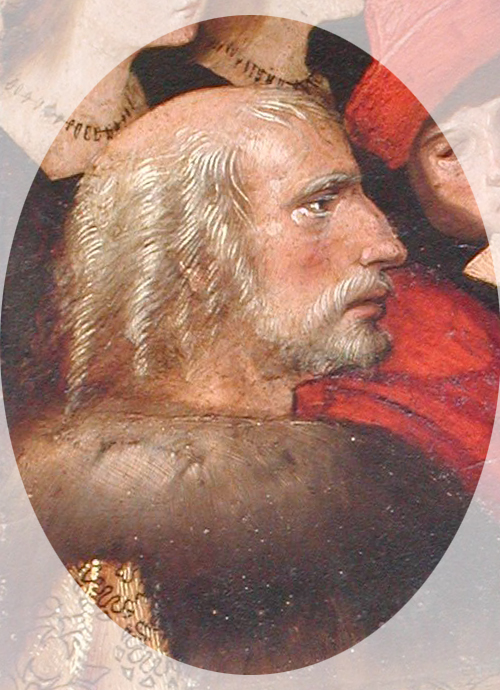The Columbian precedent
Manuel Lucena Giraldo (Royal Academy of History)
Researcher, CSIC
The true golden age of geographic discovery took place between 1492, when Christopher Columbus and his companions, on a westward voyage that was as reckless as it was well founded, in all probability managed to reach Watling’s Island, in the Bahamas, and 1522, with the return to Spain of the first circumnavigation expedition, begun by Ferdinand Magellan without that being the objective, and completed by Juan Sebastián Elcano.
That first voyage around the world thus brought to a close a series of explorations initiated by Columbus, insofar as Magellan and Elcano succeeded in reaching the Spice Islands, the long- awaited desire of Iberian navigators as the final aim of their maritime exploits.
In truth, the astonishing success of the Columbian voyage of discovery in 1492, culminating with the return to the Iberian Peninsula in March 1493, made possible the immediate organisation of the second voyage, with full royal support. It set sail from Cádiz in September of that same year and is described as a voyage of settlement, for that was its nature. It consisted of a fleet of seventeen ships and close to one thousand five hundred men and a few women, including nobles, artisans, mariners, labourers and religiouses. As they sailed further south than on the first voyage, in the Lesser Antilles, they found the islands of Dominica, María Galante (Marie-Galante), Guadalupe (Guadeloupe), Montserrat, Santa María la Redonda (Redonda), Santa María de la Antigua (Antigua), San Martín (Sint Maarten) and Santa Cruz (Saint Croix), as well as Borinquen (Puerto Rico). When they reached La Española (Hispaniola) on 22nd November, Columbus and his companions found Fort Navidad, established by members of the first voyage, destroyed and the garrison annihilated. They then left that place and founded Isabela, the first European city in the New World. On 24th April 1494, they finally set sail again ‘in search of Asia’, while they sailed past Cuba and Jamaica. Not long afterwards, ill and exhausted by his ceaseless search for Asian geographic or cultural references, Columbus returned to the peninsula. The feats of discovery did not prevent the second voyage from being a disaster foretold. Populating and colonising those lands would require a different strategy. Neither China nor Japan nor the Spice Islands made an appearance anywhere.
From that point forward, it became clear that the fortunate geographic fallacy that had facilitated Columbus’s undertaking, based on the possibility of reaching Asia from Europe by sailing west, was playing by other rules. No one could yet suppose that a new continent, America, stood in the way. Columbus himself believed that he had reached a group of ‘Indies isles’. However, his credit remained valid. In the autumn of 1496, the king and queen granted him an audience in Burgos. Ferdinand and Isabel wanted to make use of his expertise as a navigator and explorer, but they had realised the need to keep him out of governing. Despite the monarchs’ wariness, in April 1497, Columbus began making preparations for a third voyage. Thanks to the support of the crown, he was able to fit out six ships, on which he took aboard soldiers, mariners, labourers, artisans and craftsmen of different trades, whose tasks included introducing crops such as sugar cane and distributing land among the settlers.
In May 1498, Columbus’s third voyage departed from Sanlúcar de Barrameda. They passed Cape Verde, the island of Trinidad, the Orinoco Delta, and on 2nd August 1498 they entered the Gulf of Paria, discovering the South American continent. Columbus was removed from office not long afterwards, but in October 1501 he was nonetheless authorised to make preparations for his fourth voyage. It was a desperate search for the Asian route, for a passage to the west of the Antilles that would lead to the Far East.
The admiral departed Cádiz on 9th May 1502, with a fleet of four ships, bound for the Canary Islands. On 15th June it was off Martinique and in August 1502, it made landfall in the territory now known as Honduras. It then travelled along the Central American isthmus southward, skirting Nicaragua and Costa Rica, to Veragua, on the Panamanian coast, where they tried in vain to found a city, Río de Belén. After being confronted by continual storms and hurricanes, the admiral lost two ships. And with the other two in very poor repair, he made port in Jamaica on 23rd June 1503. He remained there for one year, ill with arthritis, awaiting help. In November of the following year, he finally reached Sanlúcar de Barrameda. Although it is open to debate whether Columbus came to accept the existence of a new continent on the route to Asia before his death in Valladolid in 1506, it would be the crews of Magellan and Elcano who would solve that geographic enigma with their voyage around the planet.

